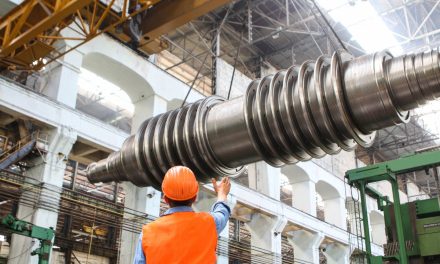Capitalizing on the North American Manufacturing Renaissance with Talent and Emerging Tech
By Gustavo Sepulveda, Process Automation Business Head, Panasonic Connect
The phrase “Made in China” is near ubiquitous. It’s on t-shirt tags, the toys children play with, and thousands of other products—but that’s changing fast.
 U.S. companies are rapidly reducing their production in China. In 2021, 10% of companies said that they were cutting their investments in China. One year later, 19% of U.S. companies told the American Chamber of Commerce in Shanghai that they were no longer involving themselves with the country. North American manufacturers are taking this as an opportunity to bring back manufacturing stateside. With $52.7B in investment for semiconductor manufacturing, R&D, and workforce development thanks to the CHIPS and Science Act, the U.S. government is bolstering the industry, and companies are following suit: In just the last year, companies have announced nearly $200 billion in investments for semiconductor, electric vehicle, and battery manufacturing in the United States.
U.S. companies are rapidly reducing their production in China. In 2021, 10% of companies said that they were cutting their investments in China. One year later, 19% of U.S. companies told the American Chamber of Commerce in Shanghai that they were no longer involving themselves with the country. North American manufacturers are taking this as an opportunity to bring back manufacturing stateside. With $52.7B in investment for semiconductor manufacturing, R&D, and workforce development thanks to the CHIPS and Science Act, the U.S. government is bolstering the industry, and companies are following suit: In just the last year, companies have announced nearly $200 billion in investments for semiconductor, electric vehicle, and battery manufacturing in the United States.
To capitalize on this renaissance in North American manufacturing, manufacturers need to meet increased demand for stateside products. They can start by attracting and retaining top talent and leveraging emerging technology. Their efforts will allow North American manufacturing to grow and establish global leadership in the production of a wide range of goods.
Technology to Boost Efficiency on the Job, While Lowering Costs
New factories and new manufacturing jobs are emerging across North America — a new truck manufacturing plant in South Carolina, hundreds of new jobs at an auto parts manufacturer in Tijuana, for example. This is great news for the industry.
But inflation is also causing material costs to rise, and many manufacturers are struggling to attract and retain a skilled workforce. Emerging technology is essential to help manufacturers address both rising costs and training an evergreen workforce.
Automation can speed up production, but implementing new technologies requires downtime. Even if the downtime is only for a few hours, for some manufacturing leaders, any downtime is too much. Leaders in this new manufacturing era feel an intense pressure to keep up with the speed of demand. The irony is that in the long-term, automation can have a positive impact on the speed of production by over 90%. This means shorter lead times, so products are off the production line and into customers’ hands faster. Faster production means a better bottom line too. Autonomous supply chains can lead to an increase in revenue of up to 4 percent. Leaders need to think long-term about their goals and how they can achieve them through technology. If they get caught up with the implementation process, leaders will miss out on better production line efficiency and lowered costs.
Staying Closer to Factories and Reducing Supply Chain Woes
Not everything is within manufacturers’ control. More than half (51%) of U.S. companies expect the supply chain to remain challenging into 2023. For many manufacturing companies, moving back to North America presents a greater opportunity for visibility and transparency into their factories.
Material shortages and geopolitical issues continue to stress supply chains. Shorter distances between a factory and customers mean potentially fewer obstacles for manufacturers to navigate. More importantly, it means shorter lead times for products. With 62% of shoppers expecting their orders to arrive in less than 3 business days when choosing free shipping, this makes a difference. Manufacturers aren’t only expected to keep up with demand, but also expectations around shipping. Factories are the first step in ensuring that customers get their products on time. A delay in manufacturing production leads to a snowball effect, impacting consumers and manufacturers’ relationships with their customers. With operations closer to the consumer, manufacturers can keep up with the demand of the moment.
Training and Mentoring the Next-Gen North American Workforce
As employment opportunities arise in manufacturing, companies can shape the next-generation workforce. Companies who provide basic training to their employees, including hands-on experience with printed circuit board design and surface mount technology, will increase employees’ confidence in doing their jobs. When combined with opportunities for job growth, that confidence in employees will encourage them to stay with a company. Young employees can build upon that initial training, and grow their careers within their companies.
The manufacturing industry is on track to reach 2.1 million unfilled jobs by 2030 as baby boomers retire. What would happen if baby boomers were to retire before passing along their institutional knowledge to the incoming generation? This knowledge would be lost. It’s important as it ensures a smooth transition from one generation of workers to the next. That’s why companies should encourage baby boomers to transfer their industry know-how to the upcoming generation. They can do so by emphasizing how much the industry has grown over the course of the past few decades, and how much opportunity there is to grow the industry even more in the next couple of decades. It’s about recognizing their important contributions to manufacturing, and not letting that stop with their retirement. The new batch of workers can bring their innovative ideas into manufacturing jobs, while building on the experience and insights that more experienced workers have shared with them.
Maintaining Manufacturing Success Into the Future Amidst Challenges
Manufacturers should focus on what they can control, which is how they continue to produce goods even amidst global geopolitical and supply chain challenges. And that’s why implementing the right technology, and enlisting and training the new workforce, is so important.











